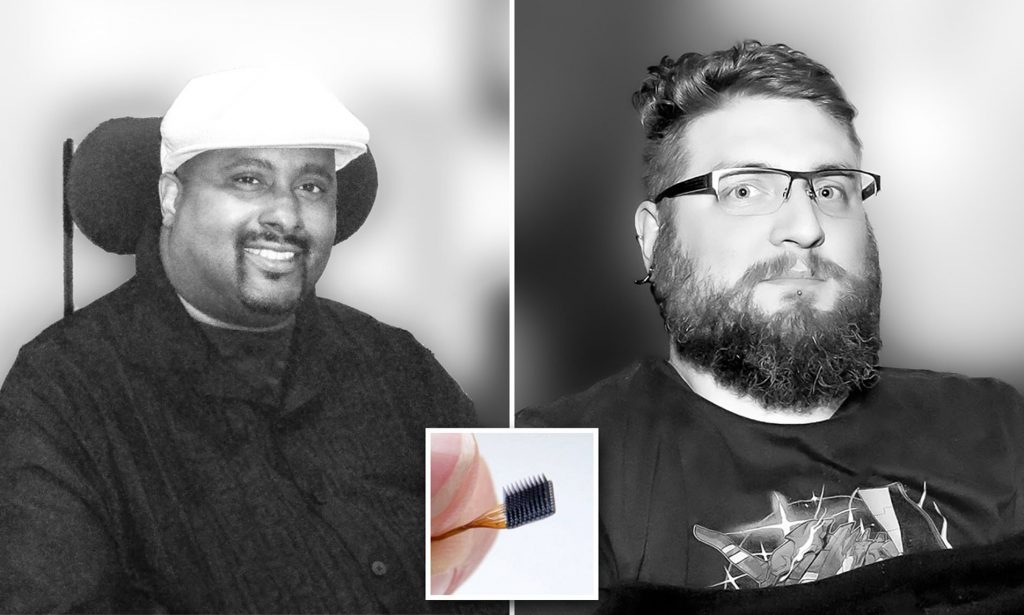The CEO there has his sights set on curing blindness, paralysis, and depression.
It sounds like science fiction, but a company in Utah has implanted brain chips in scores of patients already. Salt Lake City-based Blackrock Neurotech has the lofty goal of curing physical paralysis, blindness, deafness, and melancholy. The NeuroPort Array chip enables individuals to control robotic limbs and wheelchairs, play video games, and even experience sensations.


It operates by attaching nearly 100 microneedles to the brain and reading electrical signals generated by a person’s thoughts. More than three dozen individuals have received it thus far. In 2004, the device was first implanted in a human. The company’s leaders anticipate releasing the product shortly, announcing in 2021 that they aimed for the following year.
Elon Musk, a tech tycoon, has also launched similar initiatives with Neurolink, an implantable device he hopes will aid similar populations. Earlier this year, regulators thwarted Mr. Musk’s initial intentions by rejecting a request to test his implant on humans.
Marcus Gerhardt, the co-founder of Blackrock, told DailyMail.com, “We’re the only company with direct-brain BCI implants in humans.” ‘Our implantable arrays have made it possible for individuals to connect directly to computers, control robotic limbs and wheelchairs, play video games, and even regain sensation using only their brain signals.
The technology of Blackrock employs an implantable microchip with 96 arrays — small needle-shaped brain chips that can detect and stimulate electrical signals. It can be implanted anywhere on the surface of the brain. Multiple devices can be implanted in the cranium of the same individual.
What does the Device Detect?
The device detects electrical signals generated by the wearer’s thoughts after implantation. These signals are decoded by machine learning software into digital commands, such as cursor movements, that can be used to control prosthetics and computer equipment. This can assist a person control a wheelchair or prosthetic limb, using computer programs, or drawing with a robotic arm.
However, the company is now seeking FDA approval for paralysis-related devices designed for use outside of the laboratory. Gerhardt stated, “We are seeking regulatory approval for MoveAgain, the world’s first BCI designed specifically for home use.” This medical device seeks to improve paralysis patients’ independence, mobility, and, ultimately, quality of life.
He believes that BCIs will become as commonplace for paralyzed patients as pacemakers have become for those with heart problems. As he continued, he said, ‘Once home-use BCIs are available, they will help people create new lives that may have seemed impossible due to their disability; we anticipate that people will return to work, gain greater independence, and engage with the world in profoundly new ways.
Our long-term goal is to make our implants as accessible to people with paralysis as pacemakers are to those with cardiac problems. Already, the company is developing brain-computer interfaces to restore hearing and sight. Mr. Gerhardt stated, “As technology continues to advance, BCIs with indications for memory and mental health conditions such as anxiety and depression will become available.”
Blackrock
Blackrock, which is unaffiliated with the asset management firm, refers to them as ‘BCI pioneers’ and has administered the test to more than three dozen individuals. The device has been implanted in patients for a combined 80 years without significant adverse effects being reported. However, the device is not without flaws. After roughly two years, the signal quality of the implant degrades as a result of the arrays’ gradual deterioration. Typically, the device must be removed after approximately five years, necessitating a second surgery to remove and then replace it.
Nathan Copeland has had a BCI for eight years and uses it to play video games and create art with a robotic limb. He recently demonstrated his ability to serve himself by eating a Taco Bell Cheesy Gordita Crunch with a robot arm controlled by his brain. The artwork of Mr. Copeland is currently on display at The BCI Exhibit at AAAS in Washington, D.C.
Mr. Gerhardt stated, ‘When it comes to art, Nathan’s preferred mediums are MS Paint and GIMP, whereas James Johnson is the most proficient BCI Photoshop user among us. Before James became paralyzed, he ran a modest photo manipulation business for clients. ‘Using his BCI, he has been able to return to Photoshop, and his artwork is also on exhibit at The BCI Exhibit.’
Mr. Gerhardt asserts that Blackrock first implanted a BCI in 2004, but has frequently avoided publicity out of concern for how the public perceives the devices. “As a company, we’ve taken a much more active role in stepping out from behind the curtain and assisting enthusiastic patients in sharing their stories,” he explained. Once patients have access to these devices outside of the laboratory, I believe public interest will significantly increase.
What BCIs can do?
When it comes to what BCIs can accomplish in the future, “anything goes.” Mr. Gerhardt thinks the technology will soon be utilized to treat everything from PTSD to depression and the restoration of lost memories. “For example, with depression, BCI could show promise for modulating neural activity in the regions of the brain that are involved in mood regulation,” he said.
Spatial and temporally targeted electrical or magnetic stimulation of brain tissue has the potential to interrupt or reprogram firing patterns that contribute to diseases including depression and post-traumatic stress disorder (PTSD). Depression, for example, may be better understood and diagnosed as a result of the data. Long-term, BCI research may lead to a method for recovering forgotten information.
‘Memory is a complex process,’ Gerhardt adds, “but improved implanted BCI technologies may be able to use targeted electrical recording and stimulation of individual neurons and circuits to help restore some of the functioning associated with memory formation and retrieval. Memory patterns can be recorded and reconstructed using BCI technology, as has been suggested.




